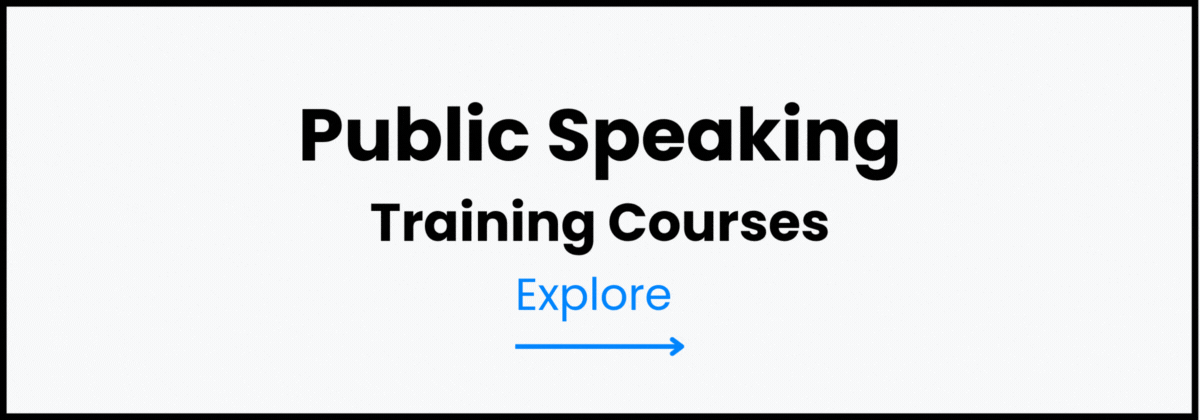How to Boost Confidence Before a Public Speaking Event
Few professional skills carry as much weight as public speaking. Whether addressing a boardroom, leading a workshop, or delivering a keynote, the ability to communicate with confidence determines how your audience perceives both your message and your credibility. Yet, for many professionals, the thought of speaking in front of others evokes fear, anxiety, and self-doubt.
Confidence is not about eliminating nerves altogether. In fact, even world-renowned speakers admit to feeling nervous before stepping on stage. The difference is in how they channel those nerves into presence, energy, and authority. With structured preparation, mindset strategies, and practice, you can transform apprehension into confidence and deliver with lasting impact.
This guide explores practical steps to boost confidence before a public speaking event, ensuring you walk on stage ready to inspire, influence, and connect.
The Psychology of Confidence in Public Speaking
Confidence is not just about skills — it’s also about mindset. When preparing for a presentation, your body and brain enter a state of heightened alertness. This physiological response often leads to sweaty palms, rapid heartbeat, and tension. While commonly labeled as “stage fright,” these signals are simply your body preparing for peak performance.
Understanding the psychology behind this response helps reframe nerves into energy. Instead of viewing anxiety as a weakness, recognize it as your body’s way of giving you the power to perform at your best.
The Link Between Preparation and Confidence
Confidence thrives on preparation. The more familiar you are with your material, the less mental bandwidth you spend worrying about mistakes.
Steps for Effective Preparation
- Outline the Core Message: Know the key takeaway you want your audience to remember.
- Practice Aloud, Not Just in Your Head: Verbal rehearsal helps you internalize flow and timing.
- Anticipate Questions: Preparing responses reduces the fear of being caught off-guard.
- Refine Visual Aids: Slides, props, or handouts should support your speech, not dominate it.
Practical skill development through the Public Speaking Training Course gives professionals frameworks to plan, structure, and rehearse presentations in ways that naturally build confidence.
Mindset Shifts That Reduce Nerves
Even with strong preparation, nerves can creep in. What matters is your ability to shift perspective.
- Reframe Nervousness as Excitement: Physiologically, both feel the same. By telling yourself “I’m excited,” you train your brain to associate adrenaline with positive energy.
- Focus on Value, Not Perfection: Audiences care more about your message than flawless delivery. A stumble or pause rarely matters if your overall message is engaging.
- Visualize Success: Spend five minutes imagining yourself speaking confidently, hearing applause, and seeing engaged faces. Visualization primes the brain for performance.
Practical Pre-Event Confidence Boosters
-
Controlled Breathing
Deep breathing exercises lower stress hormones and steady your voice. Box breathing (inhale 4, hold 4, exhale 4, hold 4) is especially effective.
-
Power Poses
Standing tall with open gestures before going on stage can physiologically boost confidence. Research shows this reduces cortisol (stress) and increases testosterone (confidence).
-
Voice and Body Warm-Ups
Gentle humming, tongue twisters, and stretching prevent stiffness and improve articulation.
-
Affirmations and Self-Talk
Replace “What if I fail?” with affirmations like, “I am prepared, my voice matters, I will connect with my audience.”
The Role of Storytelling in Confidence
Stories are natural confidence boosters. Instead of focusing on memorized lines, you tell experiences you already know. This reduces performance pressure and strengthens audience connection.
The Art of Storytelling Course teaches professionals how to craft and deliver narratives that not only captivate audiences but also make speakers feel more authentic and assured on stage.
Pre-Event Rituals That Anchor Confidence
Professional speakers often develop pre-event rituals to signal readiness and reduce nerves. You can adopt your own rituals, such as:
- Listening to energizing music before going on stage.
- Doing light physical exercise to release nervous energy.
- Reviewing three main points of your talk instead of the full script.
- Taking a moment of silence to ground yourself.
These rituals act as mental cues, reminding your brain that you’re prepared and capable.
Engaging with the Audience to Build Assurance
Confidence grows when you stop thinking of the audience as critics and start seeing them as collaborators in your communication.
Techniques to Connect Early
- Eye Contact: Scan the room, focusing briefly on different individuals.
- Relatable Openings: Start with a personal story, a relevant anecdote, or a simple question.
- Audience Interaction: Ask for a show of hands, invite quick feedback, or use humor to break barriers.
As the audience responds positively, your confidence naturally strengthens.
The Role of Advanced Training in Confidence Building
While personal practice is powerful, structured training accelerates confidence growth. The Advanced Presentation Skills Course provides techniques in vocal variety, body language, and stage presence — essential tools for speakers aiming to command attention with authority.
Combined with Public Speaking Training Courses, professionals gain not only knowledge but also experiential practice, transforming theory into confidence on stage.
7-Day Confidence-Building Plan Before a Public Speaking Event
Day 1–2: Master the Material
Outline your talk and rehearse it aloud, focusing on flow rather than exact words.
Day 3–4: Record and Review
Film yourself and analyze posture, tone, and pacing. Make adjustments.
Day 5: Storytelling Focus
Practice weaving in at least one story that feels natural and personal.
Day 6: Simulate the Event
Rehearse in front of friends, colleagues, or even a mirror to simulate live delivery.
Day 7: Confidence Rituals
Do breathing exercises, affirmations, and visualization. Remind yourself of your preparation and value.
Famous Speakers’ Confidence Techniques
- Barack Obama often paused deliberately, using silence to command presence and calm himself.
- Oprah Winfrey draws on personal stories, grounding herself in authenticity.
- Steve Jobs prepared extensively, practicing even gestures, which gave him freedom to appear relaxed on stage.
These examples show that confidence doesn’t come from eliminating nerves, but from rehearsing and mastering delivery until it feels natural.
Recovering Confidence if Things Go Wrong Mid-Speech
Even seasoned speakers encounter hiccups. What separates confident speakers is how they recover.
- If You Forget a Line: Paraphrase and move on. Audiences rarely notice.
- If Technology Fails: Transition smoothly by engaging the audience directly.
- If Anxiety Surges: Pause, breathe, and use humor or a story to reset.
Recoveries often strengthen credibility, as they show composure under pressure.
Common Mistakes That Erode Confidence
- Over-Memorization – Leads to robotic delivery and panic if you miss a word.
- Avoiding Practice – Increases uncertainty and self-doubt.
- Overloaded Visuals – Makes you dependent on slides rather than presence.
- Negative Self-Talk – Creates a feedback loop of nervousness.
Turning Preparation into Confidence
Confidence before a public speaking event is not a mystery — it’s a skill. By preparing thoroughly, reframing nerves, practicing rituals, and engaging the audience, anyone can step on stage with poise.
With structured learning through the Public Speaking Training Course, Art of Storytelling Course, and Advanced Presentation Skills Course, professionals can move beyond fear, develop stage presence, and consistently deliver with confidence.
When preparation meets mindset, confidence is not just possible — it’s inevitable.
Explore:





